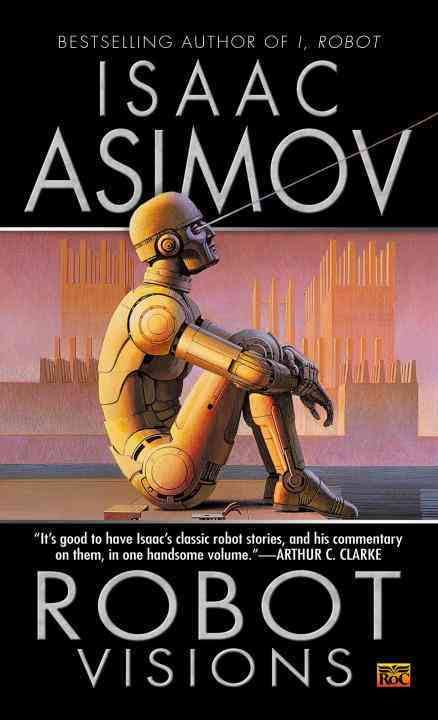Isaac Asimov’s bibliography count is around 500 published books. The exact number depends on the source. Although he delved into subjects ranging from politics to astrophysics, in both fiction and non-fiction formats, Asimov is remembered most commonly for the three series that would help shape and define the genre of science fiction. These are the Robot, Empire, and Foundation series. Each one begins as a single novel without a plan for continuation. These were some of his first stories ever published. Later, in the 1980s, he would expand within the Robot and Foundation eras which would officially combine all 15 books into one saga (18 titles in total, including books with minor connections and many short stories).
(Source: Creative Commons)
The Robot books are unique to the rest in that most of them continue the story of a single character, Elijah Baley. At first fitting the mold of the nihilist hardboiled detective, he eventually becomes Earth’s champion of progress. The rest are connected through the use of the same themes and devices, as is true for the subsequent series. For instance, while the same characters do not appear in every Robot book, they each focus on the flaws of humans to understand their own invention of the positronic brain. Exploited machines become unknowing accomplices to locked room mysteries.
Empire books vary the most between subject and plot. They share only the device of the Galactic Empire and how its self-preservation attributes to the shaping of civilization. The snapshots offer nothing to the overall development of story but serve more as a means for Asimov to discuss topics of government, civil rights, and his own scientific hypotheses.
Foundation is the most recognized among the reading public. This series describes a far future drama about the collapse of a Galactic Empire and the rise of a new, science driven society. The idea for this story was born out of Asimov’s love for history. He had a particular fondness for The History of the Decline and Fall of the Roman Empire by Edward Gibbons. He set out to write a story as grand as the non-fiction collection but felt his knowledge of history was not adequate. A push from a university professor would inspire him to write the history that hadn’t been made yet; so he wrote The History of the Decline and Fall of the Galactic Empire.
Each phase of his imaginary future history covered such a plethora of topics that it transcended characterization, which is often a point of attack by critics. His stories were never meant to be traditional and were never intended to express the struggle of the human heart against itself. Rather, he wanted to highlight both the outside and primordial influences that held us back as a civilization.



